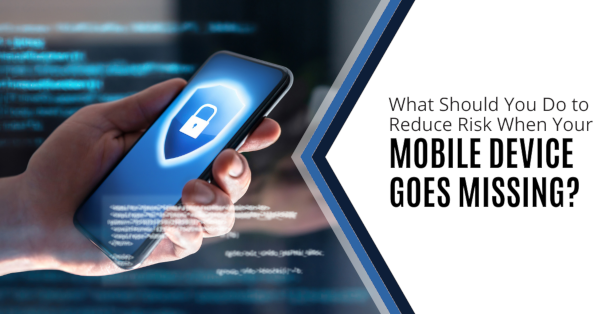Few things invoke panic like a missing laptop, smartphone or tablet. People rely on these devices and they can also contain files, personal financials, apps, passwords, pictures, videos and much more.
The information they hold can be more personal than what is in your purse or wallet. This can make a lost or stolen device a major cause for alarm.
It is often not the device that is the biggest concern but rather the data on the device and the access the device has to cloud accounts and websites. The thought of that being in the hands of an unknown person can be quite scary.
Approximately 70 million smartphones are lost each year and only 7% of them are recovered. Workplace theft is all too common as 52% of stolen devices go missing in an office.
If it is a work smartphone or tablet that goes missing it can be even worse. This can mean the company is subject to a data privacy violation and even lead to a ransomware attack originating from that stolen device.
The First Few Minutes After the Loss of Your Device Are Critical
The things you do in the minutes after missing a device are very critical as the faster you act, the less chance there is for exposure of sensitive data.
What Types of Information Does Your Device Hold?
When a criminal gets their hands on a smartphone, tablet or laptop, they have access to a treasure trove of information, including:
- Emails.
- Documents.
- Photos & videos.
- Multi-factor authentication prompts that come via SMS or installed app.
- Text messages.
- Access to any logged-in app accounts on the device.
- Passwords stored in a browser.
- Cloud storage access through any apps on the device.
- And much, much more.
Steps to Take Immediately After Your Device Goes Missing
Time is of the essence when it comes to a lost mobile device, the faster you act, the more risk you mitigate for a breach of personal or business information.
Here are steps you should take immediately after the device is missing.
Activate a “Lock My Device” Feature
Most mobile devices include a “lock my device” feature. This allows you to remotely lock your device. While good thieves may be able to crack a passcode, turning that on immediately can slow them down.
What about the “find my device” feature? We recommend only using this if you think you have misplaced the device and it hasn’t been stolen as you don’t want to end up face to face with criminals!
If it a work device – Report the Device Missing to Your Company
If you use the device for business, notify your company immediately. Even if all you do is check work email. Reporting your missing device immediately can allow your company to act fast and allow them to mitigate the risk of a data breach.
Revoke Access to All Online Services
Most mobile devices have persistent logins to online tools. Try and remember what apps you may have had on the device, like Microsoft 365, Trello, Salesforce, banking, email etc.
Use another device to log into your account through the services website, then go to the authorized device area of your account settings. Locate the device that is missing and log it out of the service. Then, if possible, revoke access to the missing device as this disconnects the device from your account so the thief can’t gain access.
Log Out and Revoke Access to Cloud Storage Accounts
It is very important to remember any cloud storage accounts you have on the missing device and then disable access. If access is not revoked, then the bad guys could:
-
- delete or alter files
- upload malware
- steal your IP
- hold you to ransom.
Active a “Wipe My Device” Feature
If it looks like your device has been stolen or lost for good, rather than simply misplaced you should use the “wipe my device” feature if it has been set up.
This will wipe the entire contents of the phone, so ensure you have a backup of any data the device may contain.
Do You Need Mobile Device Security Solutions?
No matter what size company you have, mobile device management is vital. Contact us to learn more about our endpoint security solutions.


Pingback: How To Reduce Your Risk When You Lose Your Mobile Device – ?? ?? ?? ??